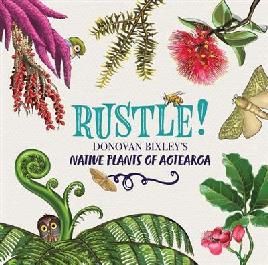I hopped up on Saturday morning and who should I hear on Saturday Morning RNZ, but Juanita Hepi talking about Native plants and storytelling. Juanita is going to be my guide later in the morning on a tour called Ki Uta Ki Tai - Native Plants of Ōtautahi. Later in the morning, I see the radio live Kiran Dass has the last word on WORD.

We gather early at The Piano to get ready for our 11.30am walking tour with Juanita Hepi (Kāi Tahu, Ngāti Wai, Moriori, Ngāti Kahungunu, Ngāpuhi). Juanita is there early too, so we all start the kōrero before the walk even starts. Our route goes down Armagh Street, over Manchester Street, to the Margaret Mahy playground then down and around Cambridge Terrace and we follow the river down the other side, heading back towards Victoria Square (formerly home to Puari Pa).
To give us context, Juanita explains the original plants of the area - grasses and tutu, and its how it was all swamp. She explains how interrelated the plants and trees are, bigger trees providing shade and shelter for smaller ones to grow under, that beech is more common in the South Island and kauri in the North Island. Juanita also shared information on how the stories of mana whenua have been woven into the rebuild of Ōtautahi Christchurch, including the plantings and whāriki (take a look at this Tūrangawaewae cultural guide)
We stop at various points on the way to have a look and hear some kōrero. One of the special stops is beside a kauri. I didn't know there were kauri in town. Juanita explains how the tree is connected with the story of Rangi and Papa, that the roots are the brain and the top of the tree are the feet. She talks about kauri dieback and the connection between whales and kauri. They are siblings, and there are often kauri near where whales strand.
When we cut down our trees, we cut down our environment.
She explains the difference between manuka and kanuka as Manuka is Mean and Kanuka is Kind (when you touch the leaves you see why, kanuka is soft). We encounter other trees and plants - tarata (lemonwood / pittosporum), tī kōuka, kōwhai, kahikitea, harakeke, rimu, and find out what they are used for, and how they grow. We even discover unexpected influences - Juanita shows that the shapes of the jointed rush oi oi inspired piupiu.
The kōrero is fascinating - it encompasses science, history, stories, and such a massive span of time that we are all left feeling full of wonder. Kia ora Juanita.
It's all about connection.
More from Juanita Hepi
- Matariki is Not a Pak'n'Save Special by Juanita Hepi
- Juanita talks about Aotearoa's native planets in WORD Christchurch 2023: Cabinet of Curiosities, Chamber of Horrors - from Balaclavas to Ghost Poo
- Juanita Hepi Garden of Sound
More native plants
- Native plants Department of Conservation Te Papa Atawhai
- Canterbury native plants Department of Conservation Te Papa Atawhai
- Ngā Rauropi Whakaoranga provides access to information on how Māori used plants and other organisms to live in Aotearoa - New Zealand, particularly before the arrival of Europeans. Fungi and seaweeds are included, and there is information for some Pacific plants, such as Pandanus, that have links to Māori culture.
At the library:
More WORD Christchurch
- WORD Christchurch website
- Follow WORD Christchurch on Instagram, Facebook and X FKA Twitter
- Our WORD Christchurch 2024 page - event reports and books by Festival writers












Add a comment to: Ki Uta Ki Tai – Native Plants of Ōtautahi: WORD Christchurch 2024